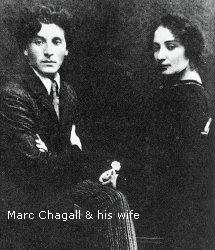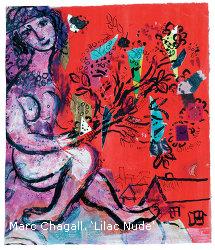|






Anzabi, Aziz
Begay Wilford
Belleuse, Albert Carrierr
Bonheur, Rosa
Bonnard, Pierre
Burr, George E
Chagall, Marc
Chiparus, Demetre
Cosgrove, Stanley
Daumier, Honore
Davidson, Allen, Pinx
Dodge, Frances Farrand
Dubois, Paul
Eaton, John
Ekman, Harry
Erte
Etienne
Favreau, Marcel
Feininger, Lyonel
Fiore, Peter
Fortin, Marc-Aurele
Foster, Arthur
Fratin, Christopher
Gagnon, Clarence
Gaucherel, Leon
Gaugengigl, Ignaz Marce
Gelena, Giovanni
Gilbert, Allen
Giles, Jeramie
Gingras
Giskegaard, Margareth
Giunta, Joseph
Good, J. W.
Granlund
Gransow, Helmut
Gromme, Owen
Guillermo Lorente Perez
Handy, Theresa
Hankey
Hannaford, Charles E
Hardy, Thomas Bush
Fredrick Hart
He, An
Icart
Incised, Acoma
Johnson, Catherine
Jones, Albertus
Kamihira, Ben
Kirkby, Ken
Labelle, Fernand
Lautrec, Henri Toulouse
Lindahl, Joseph
Lucioni, Luigi
MacLauchlan, Donald Shaw
Matisse, Henri
Max, Peter
Mene, Jules
Miro, Joan
Moreau, Auguste
Muhlstock
Muneret, Patrick
Nutting, Wallace
Palmero, Alfredo
Picasso, Pablo
Poirier, Marcel
Poor, Henry Vernum
Pope, Perpetua
Rembrandt
Remington
Renoir, Pierre Auguste
Rollins, Jo
Russel, C M Charles
Sawada
Aly El Sohby
Spalding, Elizabeth
Ta-Coumba, Aiken
Lidya Aaghia Tchakerian
Tewa, Faron
Thompson, Elizabeth
Tobiasse, Theo
Trifiro, Cristina
Vezina, Regis
Weber, Christian
Ward, William Jr.
Windisch, Etienne J
Yunia

|
|
|
Chagall in the shtetl
by
Joy Neumeyer at 25/06/2012
Chagall, Marc:
The Origins of the Master’s Creative Language |
|

Marc Chagall’s fantastical canvases—
with their floating fiddlers, two-faced cats and explosions of
color—are instantly recognizable, and uniquely beloved. But where
did these visions come from?
The State Tretyakov Gallery endeavors to answer this question with
an anticipated new exhibition in honor of the artist’s 125th
birthday. It displays dozens of rare early graphics and paintings
from his youth in Belarus, as well as mature collages,
illustrations and ceramics from the 1960s and ’70s, allowing
viewers to trace the motifs that Chagall would continue developing
until his death at age 97.
“Regardless of when his works were created, in youth or in old
age, he drew on the same sources,” Chagall’s granddaughter Meret
Meyer said at the exhibition opening.
Chagall was born Moishe Shagal in 1887 near Vitebsk, Belarus.
Under the Russian Empire, Vitebsk was part of the “Pale of
Settlement,” which relegated Russian Jews to specific areas in
Eastern Europe. He grew up in a shtetl, or small Jewish
settlement; his father hauled barrels for a herring merchant, and
his mother sold groceries.
After studying art in St. Petersburg, he arrived in Paris in 1910.
His mystical visions of shtetl life contrasted starkly with the
city’s then-dominant Cubism, leaving him excluded from artists’
circles but attracting interest from poets such as Guillaume
Apollinaire. After fleeing to the United States in 1941, he
returned to France after the war, remaining there for the rest of
his life.
The Tretyakov’s first major Chagall exhibition, the popular
“Hello, Motherland,” was held in 2005. According to curator
Yekaterina Seleznyova, the current show is a continuation of the
past one, presenting graphics and early works that were previously
left out.
Marc Chagall. ‘Lilac Nude,’ 1967. Paper, textile, gouache, ink.
Private collection, Switzerland“It’s impossible to present a
complete, exhaustive exhibition of Chagall all at once,” she said.
Seleznyova said the focus on Chagall’s roots stemmed from
responses to the 2005 show.
“Of course there were many positive reviews and thanks, but there
were also very many questions,” she said.
“Some of them were simple – ‘Why is there a green goat in the
painting, or a person with a yellow face?’ But there were also
more complicated questions about his persistent motifs.” Some of
the answers can be found in rarely seen graphic works from the
artist’s youth in Vitebsk. Drawings, watercolors and gouache
paintings from the early 1900s depict everyday scenes of shtetl
life. People attend weddings, play street music, put out fires and
gather for meals, highlighting the warmth and community that could
flourish amidst the poverty of the shtetl. The most intimate
works, on loan from Chagall’s descendants, depict moments from the
artist’s family life, such as his grandmother sweeping or taking a
nap.
“The exhibition gives the strong impression that we’re seeing, in
essence, his diary,” Seleznyova said.
To help viewers explore Chagall’s formative influences, there are
real-life artifacts from Eastern European shtetls, on loan from St. Petersburg’s Ethnographic
Museum and the Museum of Jewish History in Moscow. Next to a
painting of a family gathered around a baby carriage, for example,
visitors see a real carriage from the same time. Other period
objects on display include suitcases, Torahs, menorahs and hair
clippers.
European shtetls, on loan from St. Petersburg’s Ethnographic
Museum and the Museum of Jewish History in Moscow. Next to a
painting of a family gathered around a baby carriage, for example,
visitors see a real carriage from the same time. Other period
objects on display include suitcases, Torahs, menorahs and hair
clippers.
‘Nude Over Vitebsk’ at the Chagall exhibition in the Tretyakov
Gallery Chagall’s work was far from static. He became increasingly
enamored with color, as reflected in vibrant paintings and
collages from the 1960s and ’70s. (The works, which were studies
for murals at New York’s Lincoln Center and Metropolitan Opera,
are being shown for the first time in Russia.) He also
incorporated images from other life experiences, from youthful
Parisian nights to his late-in-life rural retreat in Provence.
But he would never abandon the themes of his childhood village,
which was decimated during World War II. In one bold red collage
from 1966, for example, there appears the familiar figure of a man
playing a fiddle, looking straight from Chagall’s sketches of
turn-of-the-century Vitebsk.
Other notable works in the exhibition include Chagall’s Bible
illustrations, with their richly colored renditions of Old
Testament characters, and black-and-white designs for Gogol’s
“Dead Souls.” The latter inspired the book’s first French
translation in 1925. Other rare treats are the 69-piece wedding
service Chagall created for his daughter Ida’s marriage in 1951,
which Chagall’s granddaughter recalled eating borshch from, and
two marble fountain sculptures from 1964. |
|
|
|
|
Gallery by Appointment
Zaidan Gallery,
7881 Decarie Blvd.
Suite 405,
Montreal,
Quebec, H4P2H2
Canada
Phone:
1(514)944-7027, Fax:1(514)344-6129, email:
info@zaidan.ca
This site contains links to other Internet sites. These links are not
endorsements of any products or services in such sites, and no information
in such site has been endorsed or approved by Zaidan International.
Payment Details: Pay Pal and most major Credit Cards, Money order/Cashier checks Personal check Wire Transfer
Shipping/Handling: To Be Determined
Zaidan Gallery is not responsible for typographical errors or omissions.
|
|
|
|


 European shtetls, on loan from St. Petersburg’s Ethnographic
Museum and the Museum of Jewish History in Moscow. Next to a
painting of a family gathered around a baby carriage, for example,
visitors see a real carriage from the same time. Other period
objects on display include suitcases, Torahs, menorahs and hair
clippers.
European shtetls, on loan from St. Petersburg’s Ethnographic
Museum and the Museum of Jewish History in Moscow. Next to a
painting of a family gathered around a baby carriage, for example,
visitors see a real carriage from the same time. Other period
objects on display include suitcases, Torahs, menorahs and hair
clippers.